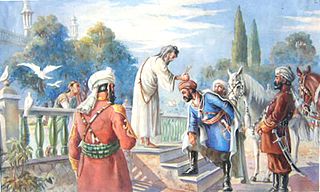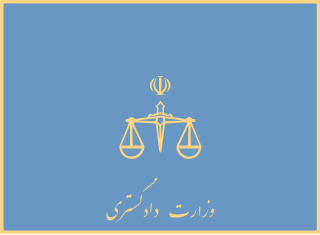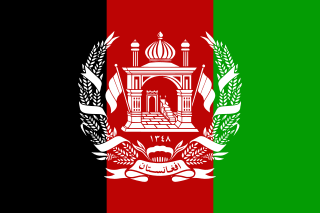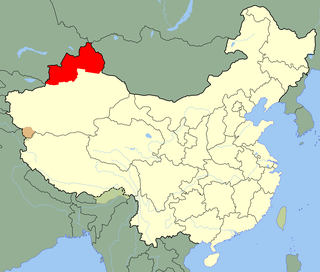Related Research Articles

Mohammad Daoud Khan was an Afghan military officer and politician who served as prime minister of Afghanistan from 1953 to 1963 and, as leader of the 1973 Afghan coup d'état which overthrew the monarchy, served as the first president of Afghanistan from 1973 until he himself was deposed in a coup and killed in the Saur Revolution.

The Durrānī, formerly known as Abdālī (ابدالي), are one of the largest tribes of Pashtuns. Their traditional homeland is in southern Afghanistan, straddling into Toba Achakzai in Balochistan, Pakistan, but they are also settled in other parts of Afghanistan and parts of Khyber Pakhtunkhwa.
Said Akbar Babrak was an Afghan militant who assassinated the first Pakistani prime minister Liaquat Ali Khan in the city of Rawalpindi on 16 October 1951. Khan, who had become the country's prime minister immediately after the partition of India in 1947, was addressing a crowd of more than 100,000 people at Rawalpindi's Company Bagh when Babrak approached him and shot him twice in the chest; Khan later succumbed to his injuries at a local hospital. As Babrak was shot dead by police officers at the scene shortly after the shooting, his motives for the assassination remain unclear. An ethnic Pashtun, he had previously taken part in the Afghan tribal revolts of 1944–1947, fighting against the governments of both Afghanistan and British India.
Ghulam Yahya Tarzi was a public servant and diplomat in Afghanistan from 1920 to 1964.

The Ministry of Justice is one of the Islamic Republic of Iran's ministries. Established in Iran's constitution, It has the responsibility of coordinating between the Judicial branch and other branches of the government.
Sāpī is a Pashtun tribe situated mostly in Afghanistan with some in Pakistan. Later on many former Pashayi speakers adopted the ethnonym Safi.

The Kingdom of Afghanistan was a monarchy in Central Asia that was established in 1926 as a successor state to the Emirate of Afghanistan. It was proclaimed by its first king, Amanullah Khan, seven years after he acceded to the throne. The monarchy ended in the 1973 Afghan coup d'état.

The Ili Rebellion was a separatist uprising by the Turkic peoples of northern Xinjiang against the Kuomintang government of the Republic of China, from 1944 to 1946. The Ili Rebellion began with the East Turkestan National Revolution, known in Chinese historiography as the Three Districts Revolution, which saw the establishment of the Second East Turkestan Republic. The leadership was dominated by Uyghurs but the population consisted mostly of Kazakhs.
Jehandad Khan was an Afghan rebel emir who ruled only in Khost for a few weeks. He was born as a member of the Ghilzai tribe, and spent most of his life as a chieftain. After start of the Khost rebellion on 2 May 1912, he briefly laid claim to the Afghan throne in opposition to Habibullah Khan, but an offensive by Muhammad Nadir Khan forced him to flee to the British Raj by the end of the same month. When Jehandad arrived in India, he was given the option of immediately returning to Afghanistan or staying in India, and he chose the latter. He then appealed to the British authorities for an intervention in Afghanistan to aid the rebellion, but was unsuccessful. Later in 1912, Jehandad managed to return to Afghanistan, where he was apprehended, put on trial, sentenced to death and executed by a firing squad in 1914.

The Afghan tribal revolts of 1944–1947 or the Khost disturbances were a series of tribal revolts in the Kingdom of Afghanistan by Zadran, Safi and Mangal tribesmen which lasted from February 1944 to January 1947. The causes of the revolts lay in the worsening conditions of farmers, changes in conscription laws, the elimination of the power of Safi tribal leaders, Amanullah loyalism, trading monopolies, government surveillance, taxation, and poverty. The conflict began when government forces clashed with the forces of a tribal leader named Mazrak, who led the Zadran tribe in revolt. The Zadran uprising was followed by additional uprisings by the Safi and Mangal, the former of which elected their own king, Salemai. Faqir of Ipi, a tribal leader from Waziristan, also fought for the restoration of former king Amanullah Khan alongside other rebels.

The Emirate of Afghanistan was an unrecognized state in Central Asia ruled by the Saqqawists that existed from January to October 1929. Habibullāh Kalakāni became the state's only emir on 18 January 1929. After the fall of Kalakāni on 13 October 1929, the Emirate ended.

Mazrak Khan Zadran was a Zadran chieftain who fought against the Afghan government during the Afghan tribal revolts of 1944–1947 in order to support the restoration of King Amanullah Khan. Some sources render his first name as Mazarak or Zemarak.

Amanullah loyalism was a series of early 20th century movements in the Kingdom of Afghanistan to restore Amanullah Khan as king of Afghanistan after he was deposed in January 1929 during the Afghan Civil War. Loyalists were sometimes referred to as Amanite. Loyalists tried to achieve this in various ways, including armed rebellions, political parties, colluding with foreign powers and assassinations. These movements petered out by the late 1940s. Amanullah died in exile in 1960 in Zürich, Switzerland, without ever regaining control, except a brief period of control in southern Afghanistan in the 1929 Afghan Civil War.
Shahswar was an Afghan politician who served as minister in under Salemai, who ruled only in the Eastern Province. Alternative renderings of his name include Shah Sarwar and Shasawar.
Amanul Mulk was an Afghan politician who served as the Minister of Defence under Salemai, who ruled only in the Eastern Province.

Babrak Khan was a Zadran chieftain who was the father of Said Akbar Babrak and of Mazrak Zadran.

Abdur Rahim Khan was an Afghan governor of Herat. He was born in 1886 in Kohistan. He served as the commander of Habibullah Khan's bodyguard from age 16. In 1921 he was promoted to brigadier. During the Afghan Civil War of 1928-1929 he joined the Saqqawists and was sent to Mazar-i-Sharif to organize a revolution. In September 1932 he was appointed by Mohammed Nadir Shah as governor of Herat. Also in 1932, he prevented a mutiny in Herat. He was appointed head of Perso-Afghan Boundary Commission in September 1934. He was appointed First Deputy Prime Minister in 1938, and then as Second Deputy Prime Minister in 1940. In January 1946, he was arrested for suspected complicity with the Safi during the Afghan tribal revolts of 1944–1947, together with his son-in-law Khalilullah Khalili. He was released in 1948.
Amanat Lewana was an Afghan politician who served as prime minister under Salemai, a king of Afghanistan who ruled only in the Eastern Province.

Muhammad Umar Babrakzai is the tribal chief of the Zadran tribe and Afghan jurist.
References
- 1 2 3 4 5 6 Mason, Whit (2011-04-14). The Rule of Law in Afghanistan: Missing in Inaction. Cambridge University Press. pp. 85, 86. ISBN 978-1-139-49552-3.
- 1 2 Edwards, David B. (2017-05-09). Caravan of Martyrs: Sacrifice and Suicide Bombing in Afghanistan. Univ of California Press. p. 33. ISBN 978-0-520-29479-0.
- ↑ Olesen, Asta (1995). Islam and Politics in Afghanistan. Psychology Press. pp. 196, 198. ISBN 978-0-7007-0299-2.
- 1 2 Yapp, Malcolm; Preston, Paul; Patridge, Michael; Office, Great Britain Foreign (1999). British documents on foreign affairs: reports and papers from the Foreign Office confidential print. From 1946 through 1950. Near and Middle-East. University Publications of America. p. 178. ISBN 978-1-55655-765-1.
- ↑ Yapp, Malcolm (2001). British documents on foreign affairs: reports and papers from the foreign office confidential print. From 1946 through 1950. Near and Middle-East 1947. Afghanistan, Persia and Turkey, january 1947-december 1947. University Publications of America. p. 136. ISBN 978-1-55655-765-1.
- ↑ See Afghan tribal revolts of 1944–1947#Duration